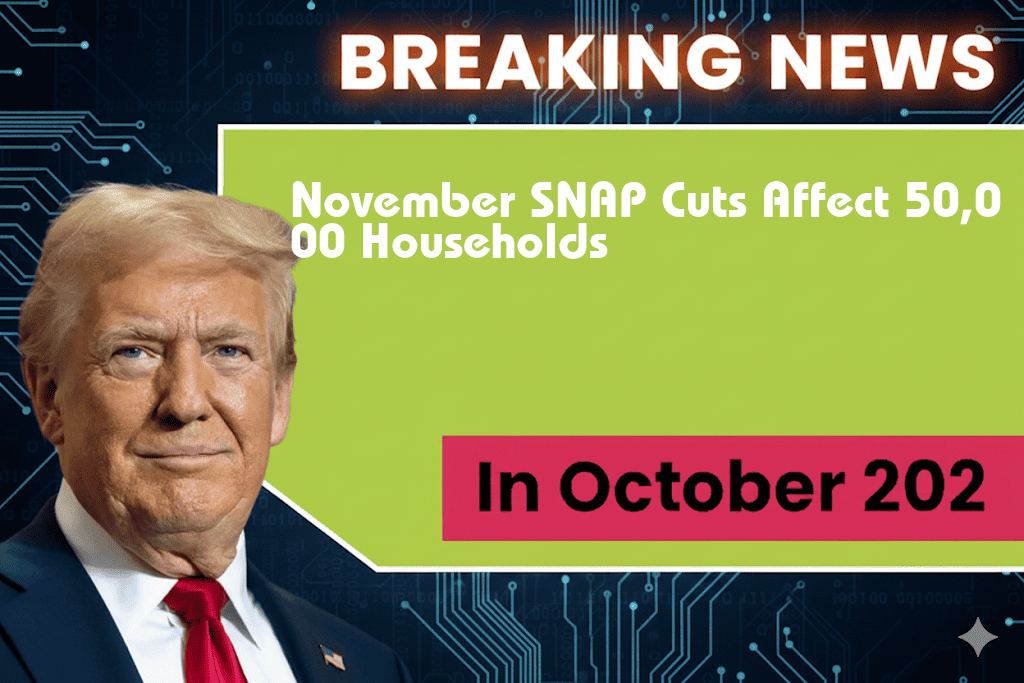November Sees $58 Monthly SNAP Reduction Impacting 50,000 Households
In November, approximately 50,000 households across the United States are facing a reduction of $58 in their monthly Supplemental Nutrition Assistance Program (SNAP) benefits. This adjustment comes as part of a broader reevaluation of benefits, affecting families that rely on this aid to cover essential food costs. The reduction, which follows the expiration of emergency pandemic-related benefits, is expected to strain the budgets of many low-income families, making it increasingly difficult for them to afford nutritious food. Advocates for low-income families are voicing concerns about the potential repercussions of this cut, stressing the importance of food security in maintaining public health and well-being.
Details of the SNAP Reduction
The SNAP program, formerly known as food stamps, has been a crucial resource for millions of Americans, especially during the economic challenges posed by the COVID-19 pandemic. The recent cut in benefits marks a significant shift in how these funds are allocated. For many households, the loss of $58 may seem modest, but for those living on tight budgets, it can have a substantial impact.
- Average Monthly SNAP Benefits: The average monthly benefit per person is approximately $169, making the $58 reduction a notable decrease.
- Households Affected: An estimated 50,000 households will see this reduction in benefits.
- Implementation Date: The reduction took effect on November 1, 2023, coinciding with the end of temporary pandemic measures.
Impact on Food Security
Food insecurity is a growing concern in the United States, particularly as inflation continues to influence the cost of living. The recent SNAP cuts are likely to exacerbate this issue, putting additional pressure on families already struggling to make ends meet. Many advocates for food assistance programs argue that reducing SNAP benefits can lead to increased reliance on food banks and community resources, which are themselves often stretched thin.
According to a recent report from the Feeding America, food insecurity affects approximately 10.5% of U.S. households, translating to over 13 million families. As benefits decline, the risk of food insecurity rises, prompting calls for policymakers to reconsider the structure and funding of these essential programs.
Responses from Advocacy Groups
Food assistance advocates have been vocal about their concerns regarding the SNAP benefit reduction. Organizations such as the Food Research & Action Center (FRAC) have highlighted the critical role SNAP plays in alleviating hunger. They argue that any reduction in benefits not only affects individual households but also has broader implications for public health and economic stability.
“Every dollar spent on SNAP generates an estimated $1.70 in economic activity,” said a representative from FRAC. “Reducing these benefits puts families in jeopardy and ultimately affects local economies.”
Looking Ahead
As the holiday season approaches, the timing of the SNAP benefit reduction raises additional concerns for many families trying to provide festive meals and celebrations. Local food banks and charities are preparing for increased demand as families seek assistance to cope with the reduced benefits.
Policymakers at both state and federal levels are urged to explore ways to restore or enhance SNAP benefits, particularly as inflation and economic challenges persist. The ongoing debate about the program’s structure will likely continue to be a focal point for discussions on poverty alleviation and food security in the U.S.
Conclusion
The reduction of $58 in monthly SNAP benefits for 50,000 households underscores the challenges faced by low-income families in the current economic climate. As advocates push for renewed support and policy changes, the importance of food security remains at the forefront of discussions surrounding social welfare programs.
Frequently Asked Questions
What is the reason for the $58 monthly SNAP reduction in November?
The SNAP reduction in November is due to adjustments made to the program that are intended to recalibrate benefits based on economic changes and program funding.
How many households are affected by the $58 SNAP reduction?
Approximately 50,000 households will experience this reduction in their SNAP benefits starting in November.
What can affected households do to cope with the decreased SNAP benefits?
Affected households can explore community resources, food banks, and local assistance programs to help supplement their food needs as they adjust to the SNAP benefit reduction.
Will this reduction in SNAP benefits be permanent?
While the current reduction is set for November, future adjustments to SNAP benefits can occur based on program reviews, funding, and economic conditions, so it’s important to stay informed about potential changes.
How can individuals find more information about their SNAP benefits?
Individuals can visit their state’s SNAP website or contact local social services to get detailed information about their benefits, any changes to the program, and available resources.

Leave a Reply